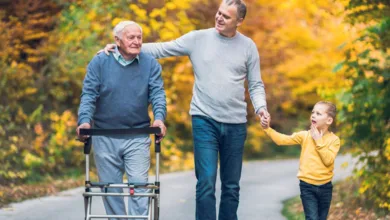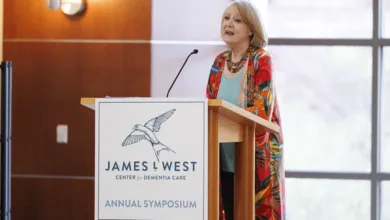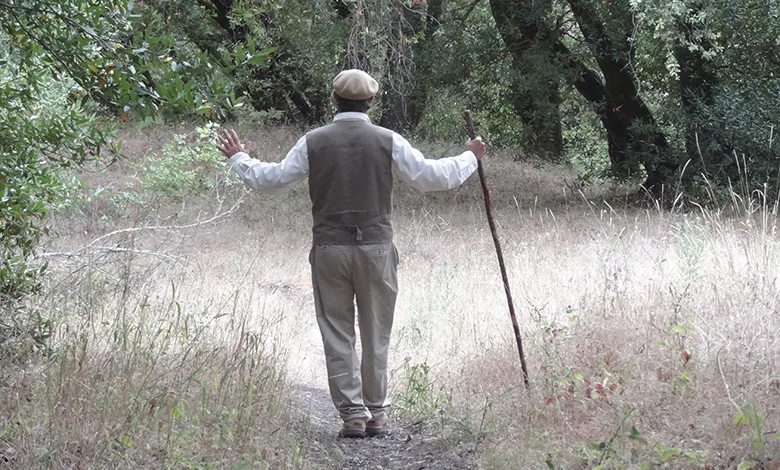
When was the last time you went outside for a reason other than to add to your step count, walk your dog, or check off another bird from your list of those you’d like to see one day?
Of course, each of those is a fine reason to step outdoors. But a movement that has been underway for more than a decade aims to strengthen our connection with the outside world in a deeper way — which is good for us physically, emotionally, and mentally.
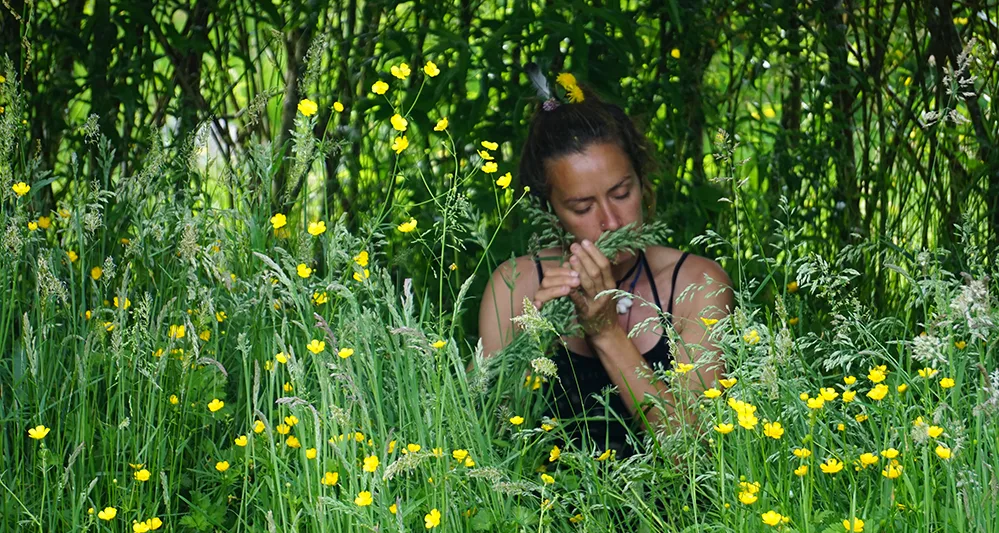
Forest therapy — or forest bathing — involves using all our senses to become immersed in what is right outside our door.
“It’s knowing about nature, not through the cognitive mind, but more through our sensory awareness,” says Manuela Siegfried, director of training for the Association of Nature and Forest Therapy.
The association, which has deepened her own relationship with nature, was founded in 2012 by M. Amos Clifford. The nature educator channeled decades of wilderness guiding, educational consulting, psychotherapy, and teaching Zen meditation to create an organization with the goal of reminding people of their unwavering connection to nature.
Since then, 3,000 guides in 70 countries have been trained in the practice, which honors a Japanese tradition called Shinrin-Yoku. Loosely translated, it means “forest bathing.”
“It’s very different from hiking, which I love,” says Siegfried, who lives in Costa Rica, a mecca for hikers and outdoor enthusiasts. “It’s different from a nature walk, in which we identify birds or trees and learn about the relationship between a certain plant and a certain animal.”
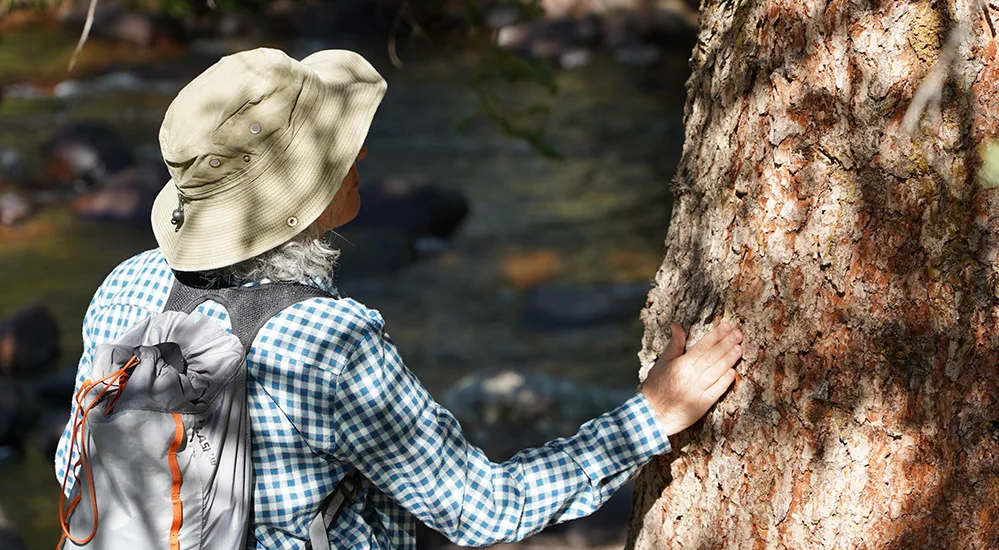
Forest bathing isn’t necessarily better than either of these, she said.
“It’s just a different way of getting to know nature: ‘Let’s know a tree by the way the leaves smell or how the bark feels.’ I don’t have to achieve anything. I don’t have to be efficient or proactive.”
For many of us today, this represents a completely different way of thinking. We’ve filled our worlds with the need for immediacy: If we don’t answer a text right away, whoever sent it thinks we’re mad at them. If we don’t respond to an email within a day (or maybe even an hour), we run the risk of offending the sender. If we’re not the first on our work team or in our class to turn in an assignment, don’t get to the restaurant by happy hour or “like” a friend’s post immediately, we consider ourselves woefully behind in life.
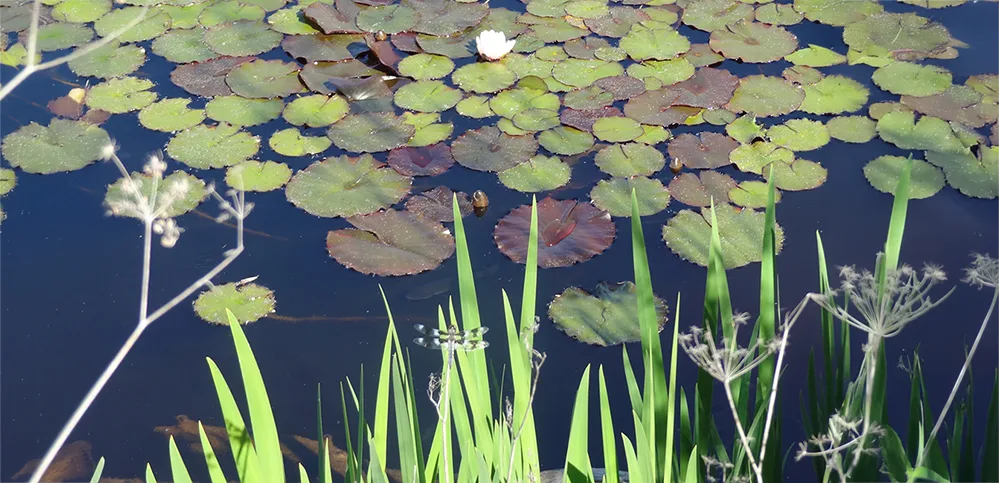
“We’re all about achievement in today’s society,” Siegfried says. “We’re evaluated as to how successful we are based on what we achieve.”
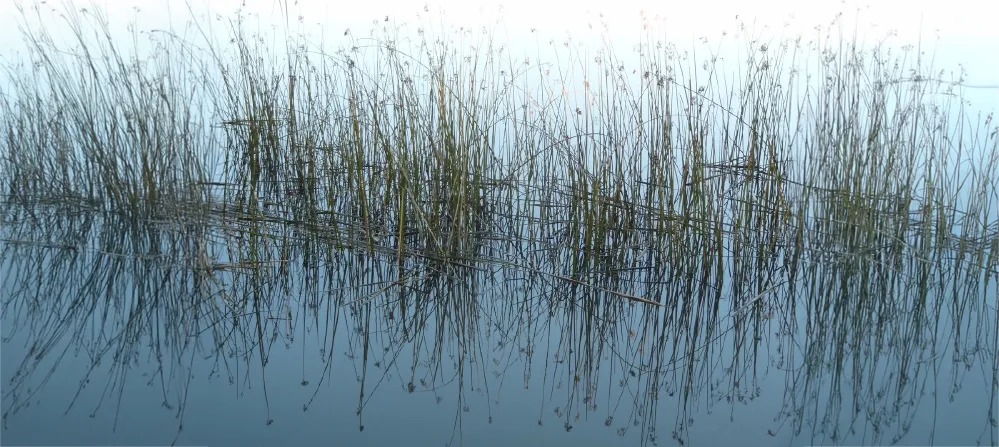
But what if achievement meant hearing birds calling out to one another? Seeing a dozen shades of green in one tiny leaf or a dragonfly fluttering above a blade of grass? Feeling the smoothness of a blade of grass and the roughness of a dry creek bed? Filling our nostrils with scents of an impending storm or a drop of honeysuckle?
What if achievement, in its most basic sense, meant focus ing on and being awed by what the world was like long before technology was even a word? And – dare we even say – even longer ago, before humans were even around?
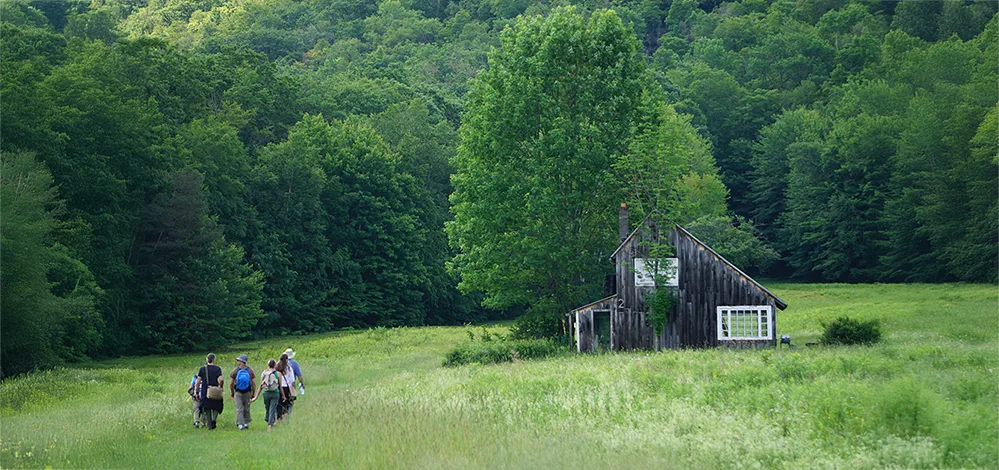
“What we do on a forest therapy walk is to make people aware of their senses,” Siegfried says. “It’s not that we’re not using our senses; we use them all the time. But we’re not consciously paying attention to what we perceive through our senses.”
When she leads people outdoors, she consciously directs their attention to their senses: “Listen to the sounds,” she and the other guides will say. “Which are near? Which are far?”
“This is so impactful to many people,” she says. “Many of them are in tears.”
And while she’s not averse to guiding one or two people at a time, being part of a group further intensifies the experience. We’re meant to be together, but the world today – for all its devices purporting to help us communicate — tends to tear us apart.
When outdoor experiences are shared, they multiply their meaning.
“There’s power and beauty in being a part of a group,” she says, “plus a cool interaction happens when people are off their phones and relating to each other in a space where there’s no rush, nothing to achieve or do here — it has an impactful effect on people.” So does simply being outdoors.
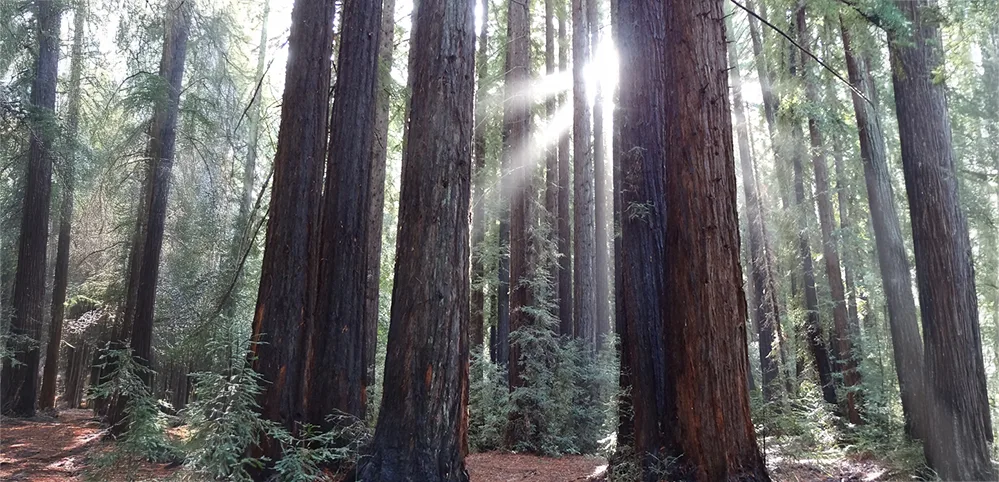
Studies show that trees release phytoncides, which are natural oils that protect them from viruses, fungi, and harmful bacteria. When humans are exposed to these phytoncides, their immune systems also receive a strengthening boost.
Additional studies abound on how spending time in nature helps us cope with chronic pain, improve our mental health, and sharpen our cognition.
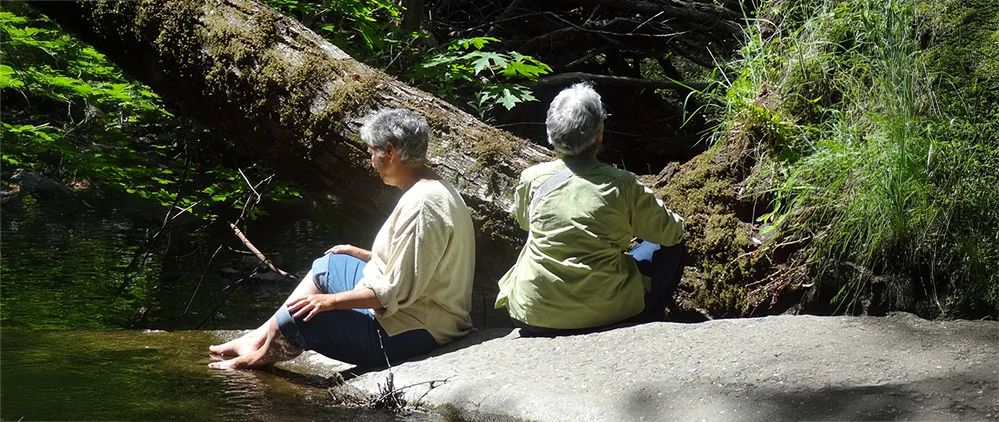
“It’s not about achieving anything,” Siegfried says. “It’s about giving yourself permission to rest and just be. People feel less stressed. After only 20 or 30 minutes of doing this, I can see their faces relax.”
Another thing to remember: Our relationship with nature is a reciprocal one, she says. We can offer thanks by picking up trash or sharing how we feel or what we see with someone. We can invite someone to join us outdoors, even for a walk around the block.
Most importantly, Siegfried says, forest bathing helps humans remember that they are part of nature, too—a concept her association calls “relational forest therapy.” Thus, we are never truly alone on this planet we call home.
“We are not separate,” she says. “Nature is not ‘out there.’ We are all nature.”
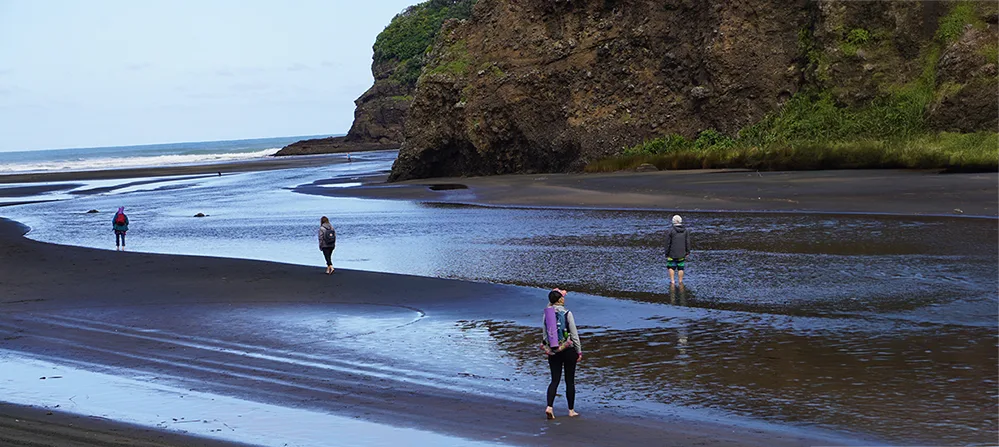
Being part of a tour isn’t necessary to absorb all that life offers outside our four walls and ever-present screens. Neither is seeking out a woodsy environment many miles away.
“You can connect with boulders and rocks, to a stream of water, the beach, and the ocean,” she says. “There are no limitations on where you can do this. We tend to think that nature is only a pristine forest very far away from us, but we forget that even in urban parks, there are trees.”
She suggests even taking five minutes before going to bed to observe the beauty in a house plant — the one you’ve probably looked at a thousand times but maybe never actually seen. How cool is the temperature of the soil that encourages its growth? How intricate are its leaves? Does it smell clean or earthy?
“When I started doing this in my backyard, I saw things I’d never seen before, and I’ve been here my whole life,” Siegfried says. “I spent an hour watching ants go back and forth. I now have this sense of immense gratitude. I don’t take this place for granted. It’s giving me so much.”
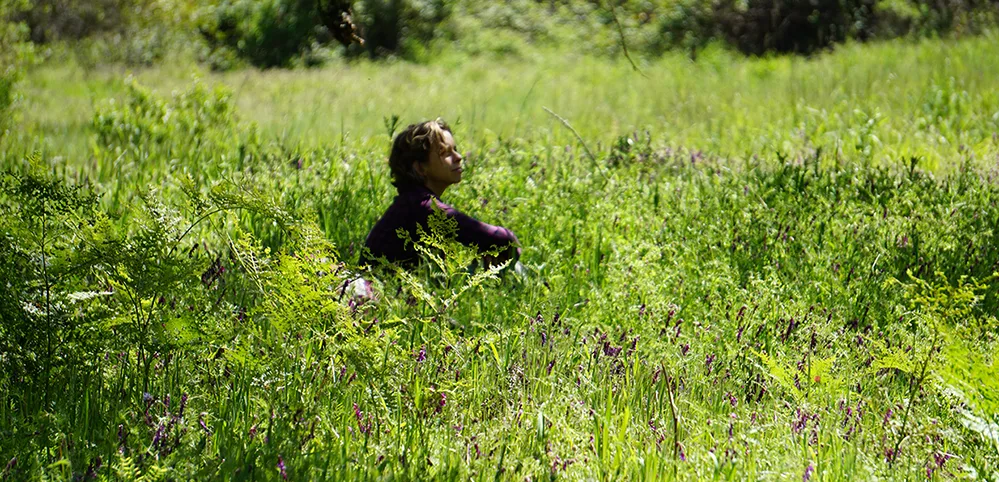
Here are five ways to incorporate forest bathing into your life:
1. Turn off your phone.
2. Step outside, remove your shoes, stand in the grass or soft soil, and just be.
3. Close your eyes. What do you smell? What do you hear – close by and far away? Open your eyes and count the colors right in front of you, then at your feet.
4. Set aside even five minutes a day to absorb all the nature you can.
5. Notice how you feel after day one and on subsequent days.
“I do everything a little more mindfully now,” says Manuela Siegfried. “I don’t get to a stressful place as often.”


